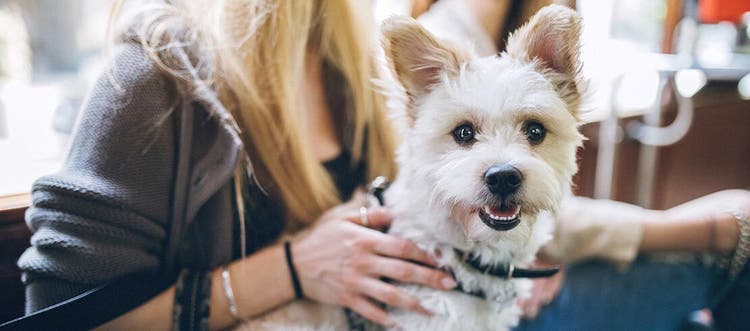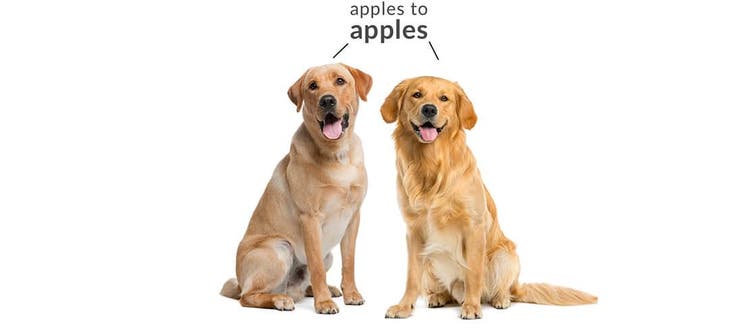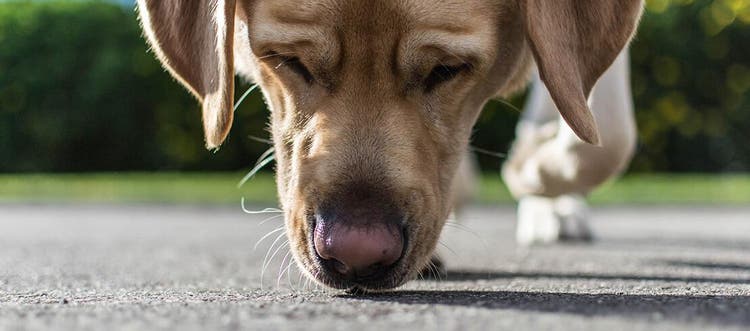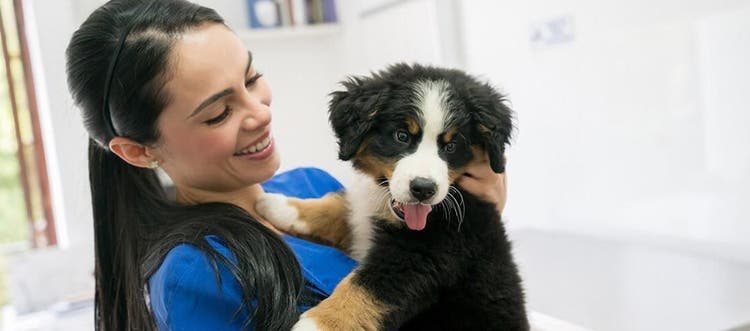Reviewed by Dr Abbie Lam DVM
Your dog’s body language can tell you a lot about how they’re feeling. Here are the signs to look out for, and what they might mean.
How to read your dog’s body language
Dogs use their eyes, ears, tail and other parts of their body to communicate how they feel about people, places and situations. Understanding your dog’s body language is an important part of communicating with them.
This is particularly important if your dog’s behaviour or body language suddenly changes from ‘happy’ to ‘nervous’ or ‘fearful’. Sometimes a dog’s behaviour or body language may signal that something is not quite right with their current situation.
Dog body language chart
| Happy and relaxed | Upset or nervous | Fearful or aggressive |
Body Posture | Relaxed, not tense in any way | Frozen or tense, possibly hunched over or showing their stomach | Frozen or tense; the hair may be standing up on their back |
Mouth | Slightly open, not showing teeth | Closed or excessively yawning, possibly drooling or licking their lips | Baring their teeth, particularly the canines; snapping and/or snarling |
Eyes | Normal shape and size, not dilated or showing the whites | Dilated or showing more of the whites than usual; they may also be squinting | Dilated and staring intently |
Ears | Relaxed and in their normal position | Hung low or pulled back | Pulled back or raised, pricked |
Tail | In the air or wagging in a slow, wide pattern | Fast wagging or held low between their legs | Fast wagging or tail between their legs; the tail may also be wagging quickly and in a tight pattern |
How to tell if your dog is happy and relaxed
A relaxed dog will not appear tense in any way. These are indicators:
- Mouth: A relaxed dog’s mouth will be slightly open.
- Ears: Their ears will be in their normal position (relaxed and hanging, not erect or pulled back).
- Tail: If your dog’s tail is high in the air, they likely feel confident or excited. And, of course, a wagging tail is usually a good sign, too. If their tail is wagging in a wide, slower-paced pattern, your dog is probably feeling happy and content.
Understanding how your dog expresses their affection by learning about pet love languages.
How to tell if your dog is upset or nervous
How can you tell if your dog is sad, nervous or anxious? Here’s a list of some of the most common signs that dogs exhibit, and what they usually mean:
- Body freezing: A dog will often freeze while they assess a situation and decide whether they need to run or fight.
- Hunched, or making its body appear smaller: Your dog likely feels scared or has assumed a submissive stance to lessen the risk of attack from a dominant dog.
- Eyes appear larger than normal: A dog’s eyes can appear large either when they feel threatened or aggressive.
- Squinting: Dogs that feel unwell can look as though they are squinting their eyes.
- Ears pulled back: If your dog’s ears are pulled back only slightly, they are probably just being friendly. But if their ears are completely flattened or stuck out to the sides of their head, they are likely feeling frightened or submissive.
- Yawning: Of course, yawning can just mean your dog is tired. But if a dog is yawning a lot, it may also mean they are stressed or nervous, as dogs sometimes yawn to calm down.
- Lip licking, tongue flicking, drooling: Many dogs lick their lips, flick their tongues or drool fairly often for other reasons, but if your dog is doing one or more of these actions more frequently, it could be a sign of stress.
- Mouth closed: When a dog’s mouth is closed, this is a sign they are alert and getting ready for action.
How to tell if a dog is fearful or aggressive
Pay close attention if either your dog or another dog shows signs of fear or aggression. Try to quickly remove your dog from situations that trigger a fearful or aggressive response. You may also need to consult a trainer if your dog frequently shows aggressive behaviour.
- Ears raised or pricked: Raised or pricked ears usually mean that your dog is alert and ready for action. They will direct their ears towards whatever is holding their interest. This can also be a sign of aggression.
- Low tail or tail between the legs: Your dog may be uncomfortable, nervous or fearful.
- Fast-wagging tail: If your dog has a fast-wagging tail combined with a defensive body posture and tense face, or is barking a lot, they may be overly excited or frustrated. Use caution when approaching.
- Standing up tall/making their body appear larger: This is a sign of either being assertive or aggressive.
- Teeth bared or snarling: Bared teeth or snarling are typically a dog’s way of telling you (or another dog or animal) not to come any closer. A dog that is signalling their intention to act aggressively will often retract their lips to bare their teeth, while also wrinkling the top of their muzzle.
- Snapping or nipping: This is a clear warning to back away, and usually means the dog feels threatened. (Snapping and nipping are also quite common puppy behaviours, but you should teach your puppy at an early age that it’s not alright to bite.)
- Biting and holding: These actions demonstrate an intent to harm and can be a sign of an attacking or ferocious dog. Consult with your vet or a professional dog trainer to ensure the safety of both you, your dog and others.
- Ultimately, learning how your dog normally behaves and reacts to situations will help you identify when they feel at ease, or possibly nervous or fearful. These body language cues can also help you and your dog stay safe in interactions with new or strange dogs.
Learn more: Obedience tricks – such as ‘sit!’ and ‘drop it!’ – can help make your dog feel comfortable and relaxed in new situations, or how to teach your dog to swim.






